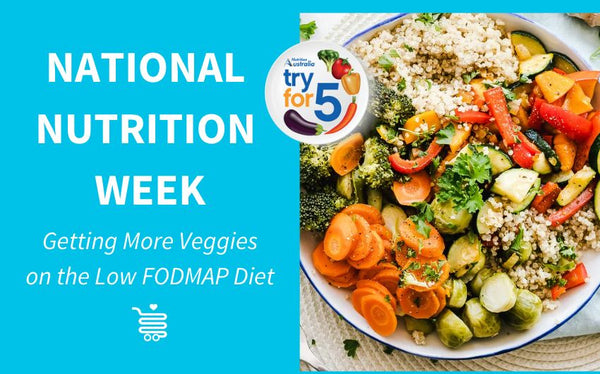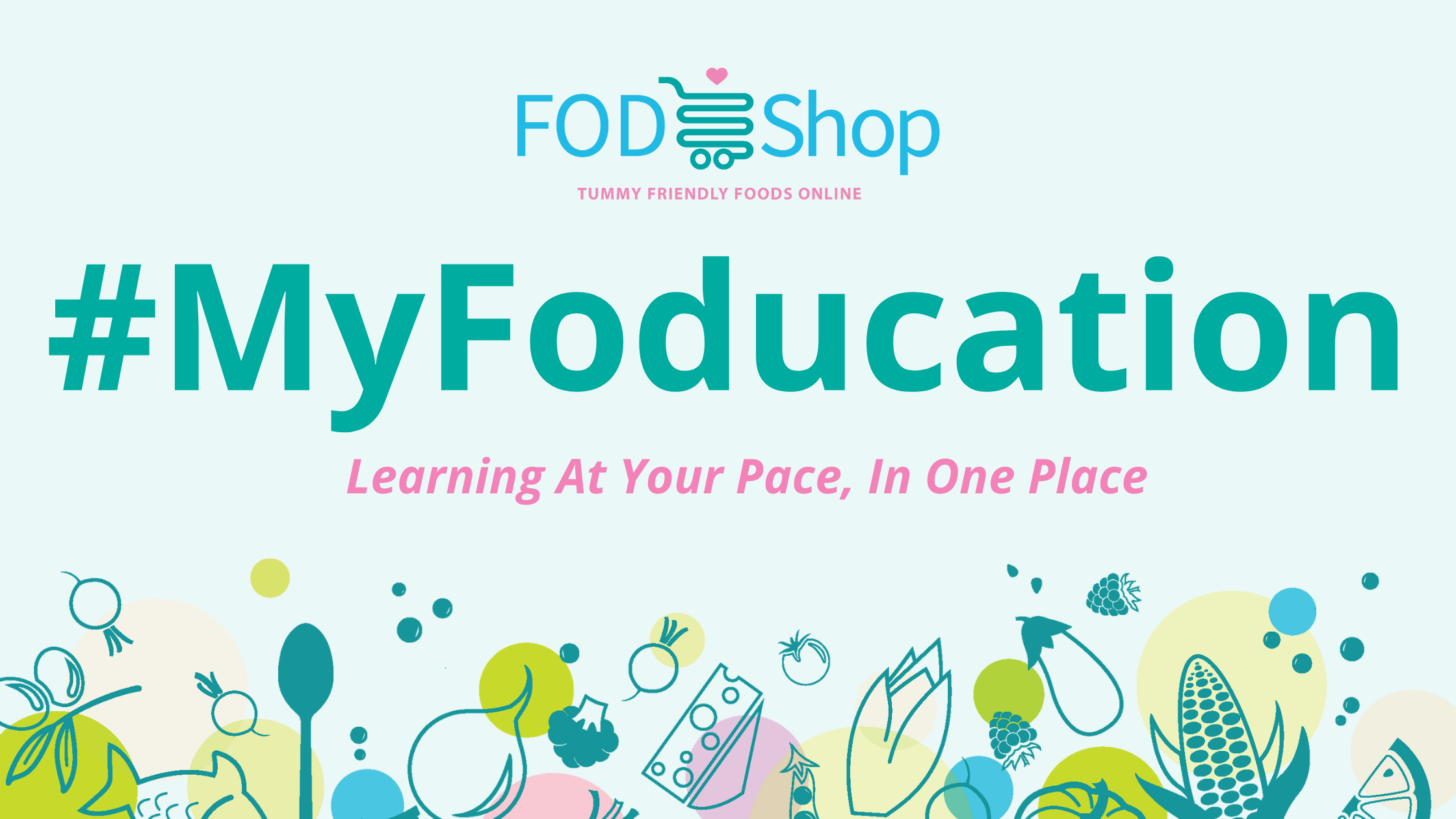- Ph: +61 435 003 412
- operations@fodshopper.com.au
"Organic Orange" has been added to your cart. View cart
"Organic Orange" has been added to your cart. View cart

In recognition of this week's National Nutrition Week, Fodshop is focusing on increasing vegetable intake following a low FODMAP diet!
Vegetables are super healthy because they help prevent weight gain and reduce risk of developing diseases such as cancer, cardiovascular disease, and diabetes. (1) This year, National Nutrition Week is focusing on 'Try for Five', to encourage more vegetables in the diet. Click HERE to learn more.
Currently, the average Australian is not meeting their daily vegetable intake recommendations. A 19-50 year old woman and man should be eating 5 and 6 serves respectively of vegetables per day. (1) Shockingly, only 7% of us are meeting these recommendations in Australia. (2)
There are plenty of low FODMAP veggies available in the supermarket and grocery stores. Below is a comprehensive list of low FODMAP vegetables that are safe to eat by serving size according to the Low FODMAP Monash University App.
A
B
C
D
E
F
G
J
K
L
M
O
P
R
S
T
W
Z
So what are some ways we can get more vegetables in our low FODMAP diet? Here are some handy tricks to eat more veg and use up some of those veggies sitting in the fridge!
1. Mix your vegetables into a frittata, bake or omelette for some hidden goodness! Some good ones include green spring onion leaves, common tomatoes, baby spinach, carrot, or corn.

2. Puree your vegetables, like white potato, sweet potato, corn, or carrot.

3. Try shredding 1/3 cup of zucchini into spaghetti to mix in with your gluten free pastas!

4. Try adding them to soups! Add 1/4 cup canned peas or some corn, carrots, and potato.

5. Try purchasing frozen, pre-ready, mixed vegetable packs from the supermarket. If your veggies are always going off in the fridge, these are a great option and they're already pre-chopped!

6. Add your favourite low FODMAP veggies to a stir fry! This can be a great way to get in a lot of veggies at once. Try using corn, carrot, capsicum, oyster mushrooms, bok choy, or cabbage.

Eating low FODMAP vegetables can be really easy! We can add them to so many different meals to add delicious flavours for a relatively cheap price.
Adding more vegetables in the diet is not only healthy, but more sustainable than a lot of other food groups. Plant-based foods are less resource intensive and contribute less to climate change than any other food group!
Take the pledge to eat more veg today! #pledgeveg
1. Australian Dietary Guidelines (2013). Department of Health and Aged Care. https://www.health.gov.au/resources/publications/the-australian-dietary-guidelines
2. Australia's Health 2018 (2018). Australian Institute of Health and Welfare. https://www.aihw.gov.au/reports/australias-health/australias-health-2018/contents/indicators-of-australias-health/fruit-and-vegetable-intake
3. https://www.tryfor5.org.au/

Leave a reply